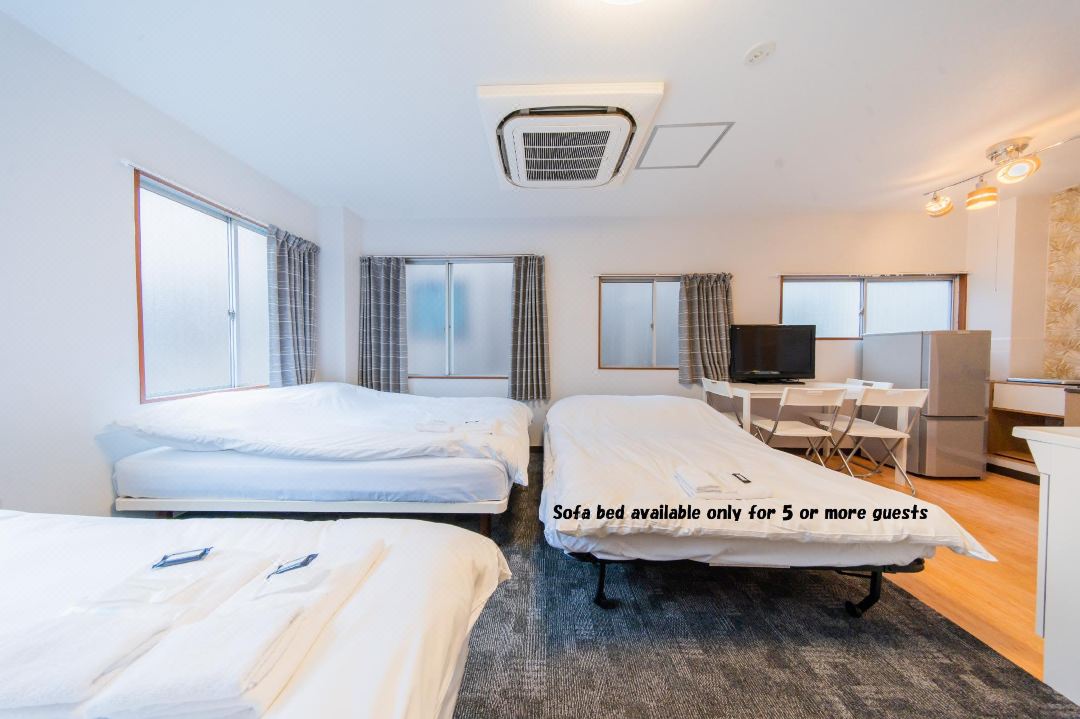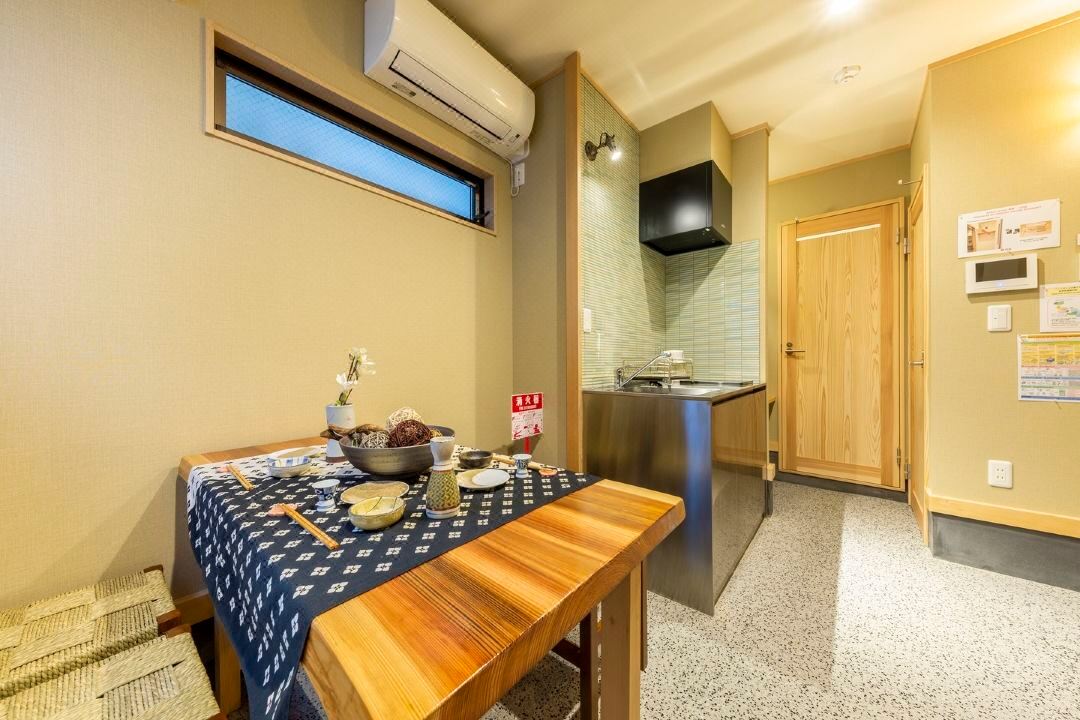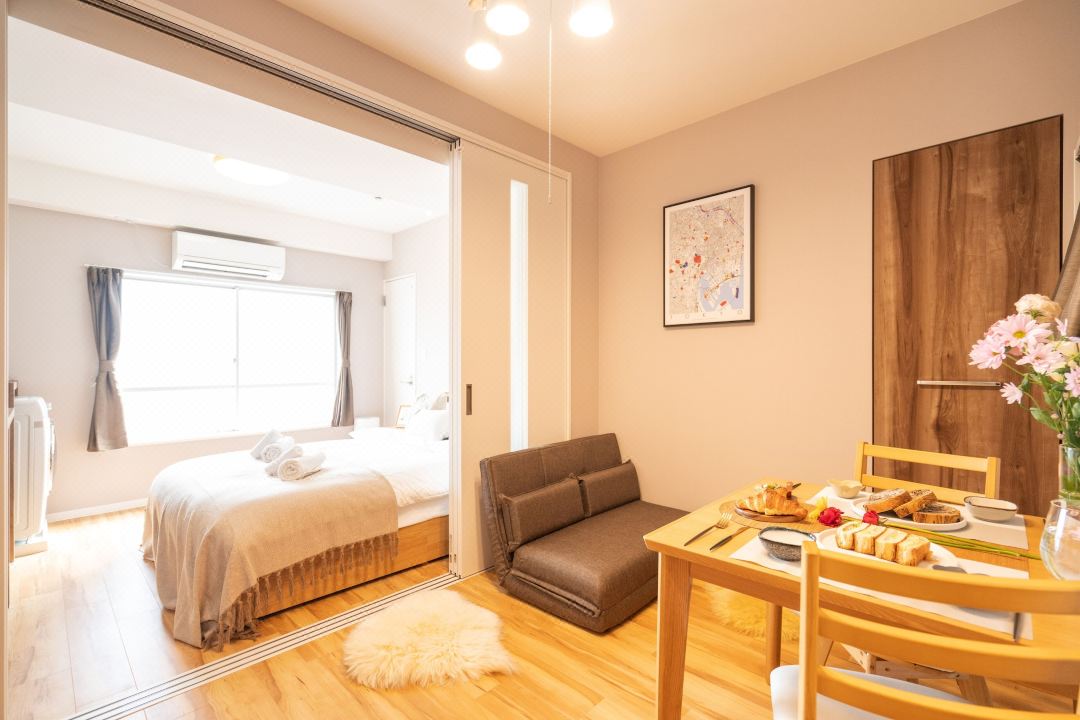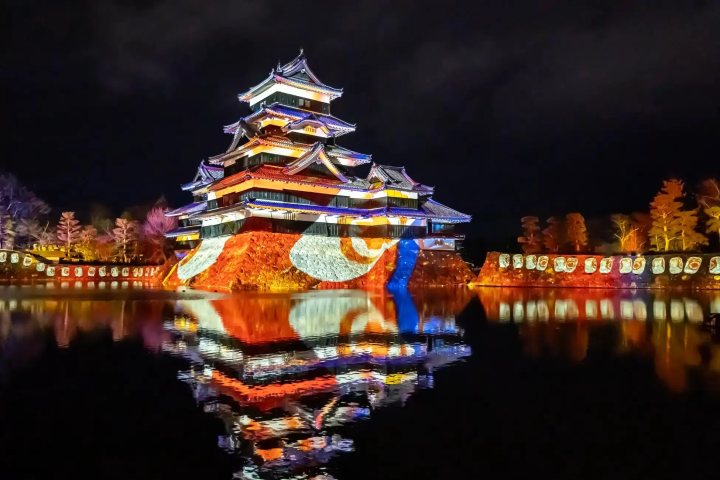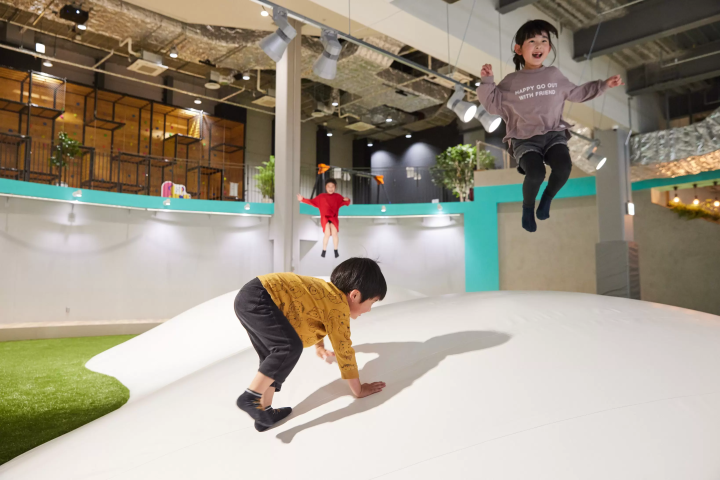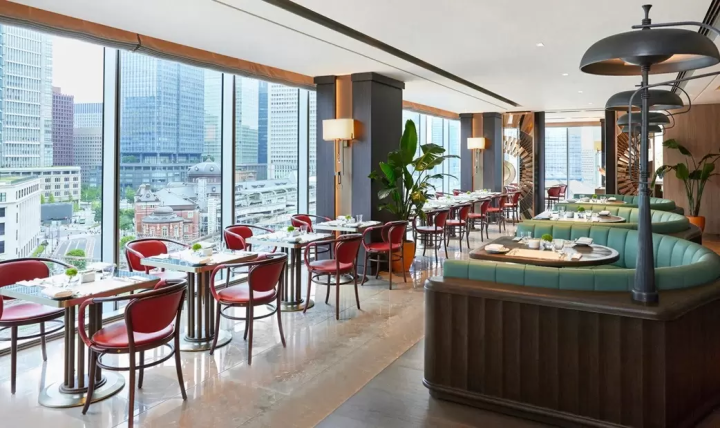Made for the Minimalist: Komatsu Ryokan

Komatsu Ryokan is a Japanese inn located halfway between Ueno and Asakusa in Tokyo. If you're seeking budget-friendly accommodation in Tokyo, this hospitable facility located close to Tokyo's major sightseeing destination might be the best choice.
Welcome back to Tokyo Ryokan Stories! I’m Roza Akino, and this will be the final installment in my series exploring the lesser-known inns and hotels in Tokyo.
Today’s visit, my final destination, takes me to a small ryokan located just 5 minutes from Inarichō Station on the Ginza subway line. This neighborhood is quiet, yet still within walking distance from major areas such as Ueno and Asakusa. Popular shopping destinations such as discount store Takeya, sometimes referred to as “the purple building,” and Ameyoko Street are also easy to access in less than 10 minutes on foot.

Shitaya Shrine
One spot worth checking out in this area is a small, very old shrine, Shitaya Jinja. This shrine has recently gained popularity during the pandemic for its hanachōzu— a display of flowers in the water basin traditionally used to purify oneself before entering the shrine.

Shitaya Jinja’s hanachozu
The flower arrangement is changed every week to reflect the seasons and holidays, so there’s always something new to see. While the itself shrine is nothing flashy, its wooden exterior austere, one of its torii gates is so big that it straddles the width of the road.
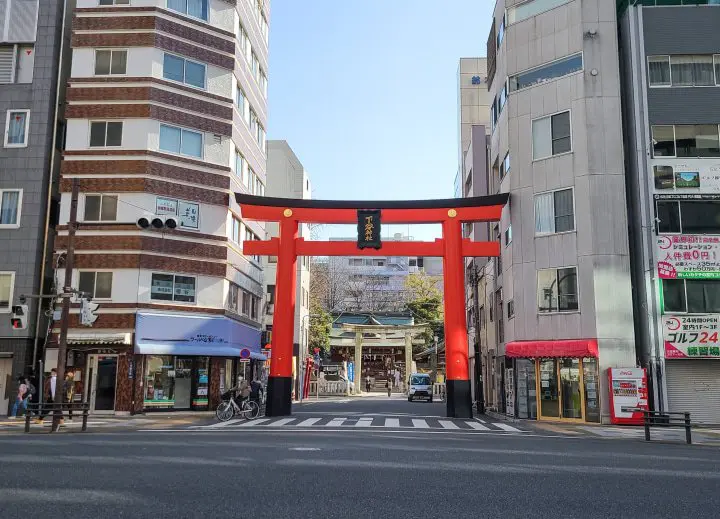
Cars drive through the massive torii gate of Shitaya Jinja
Walking through the neighborhood I notice a couple old houses, their exteriors still fitted with copper sheets that help prevent wooden houses from catching on fire. They are remnants of preventative fire measures taken after firestorms ravaged residential houses following the Great Kantō earthquake. While most houses have been modernized and rebuilt, a few specimens in the area still remain in their original state. A rare site to see, the oxidized copper exterior of these houses is covered in a distinct bluish green, standing out against the monotonous background and adding a curious pop of color to the neighborhood.

I reach Komatsu Ryokan, nestled in between a regular house and a traditional-looking yakitori restaurant, complete with red chōchin lantern in front.
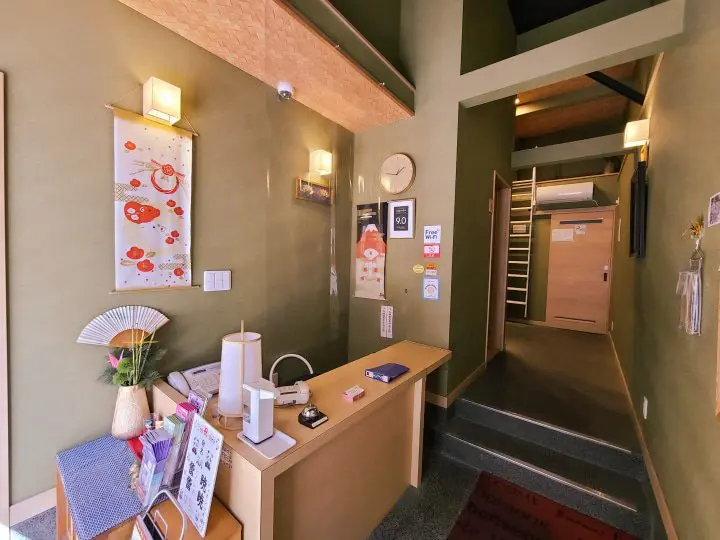
The font desk is simple and clean
As I come closer, I notice that my name is displayed inside a box outside the entrance, part of the welcome that the ryokan provides to its guests. I step through the noren to find a simple, clean-looking front desk and an older gentleman wearing traditional Japanese workwear ready to greet me. Isao Yamane-san, manager of the ryokan, leads me to a small table down the hall and prepares a cup of tea for me as I wait for the owner to arrive.
After a few minutes, I hear a voice from just outside the entrance. It’s the voice of Mitsuhiro Furuichi-san, a friendly and cheerful man whom I have actually met before.
While this isn’t our first time meeting each other, it is my first time to hear about his ryokan, so we take a seat and get started.

Furuichi-san and I
Furuichi-san explains that he opened the ryokan six years ago. His main work is in real estate, and while he used to run a hotel in Ueno in the past, it was actually Furuichi-san’s mother who wanted to open a ryokan. And so, to realize his mother’s dream, Furuichi-san decided to renovate this two-story building—originally home to the workshop of a traditional kite maker—into a small traditional five-room inn.
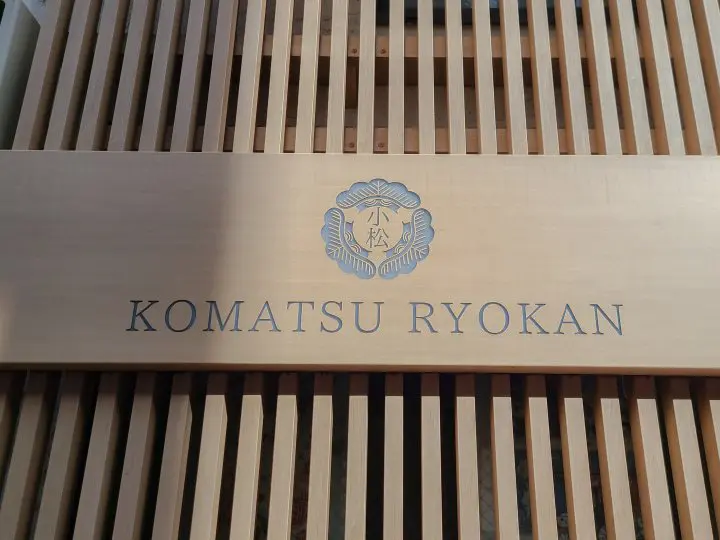
Opened only six years ago, Komatsu Ryokan still looks very new. It is named after Furuichi-san’s family’s yago—the house name—Komatsuya.
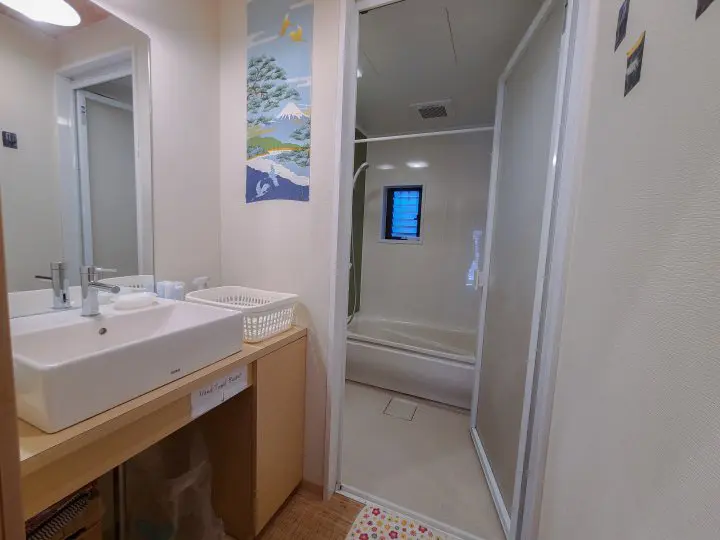
The shared bath and shower room
The inn offers only the bare minimum—there are no TVs, no private bathrooms, no breakfast, and one shower shared between guests.

There is a set of shared toilets both on the first floor and on the second
However, everything you need to have a comfortable night’s stay is here, and the level of cleanliness for the price can’t be beat. Free Wi-Fi is available as well.
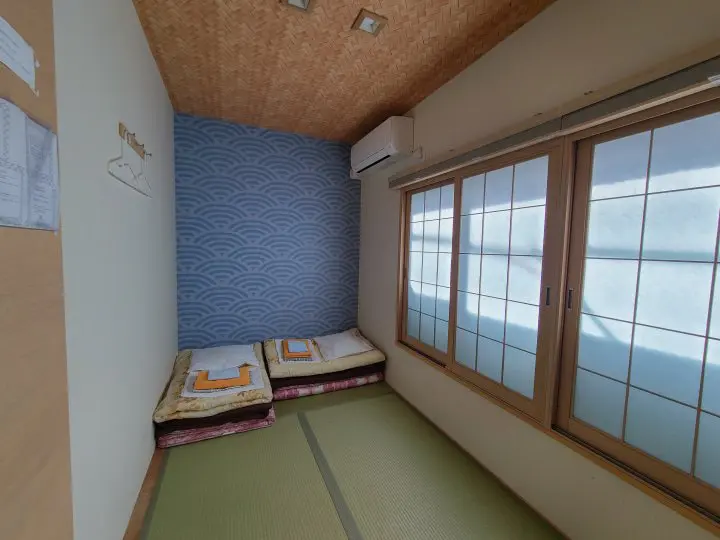
Seigaiha (wave pattern) wallpaper
The rooms are compact, but because they are Japanese-style with plenty of vertical space, they don’t feel cramped.
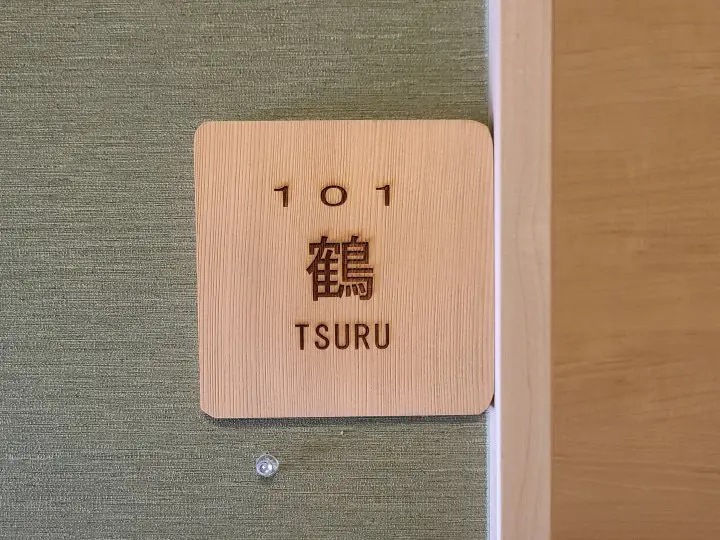
A wooden placard has the room name and number outside of each room
The ceiling throughout the ryokan displays a woven bamboo pattern, while the wallpaper features traditional motifs: asanoha (hemp leaf), seigaiha (waves), ichimatsu (checkered pattern), shippō (seven treasures), and uroko (fish scales), adding a unique flavor to each room.
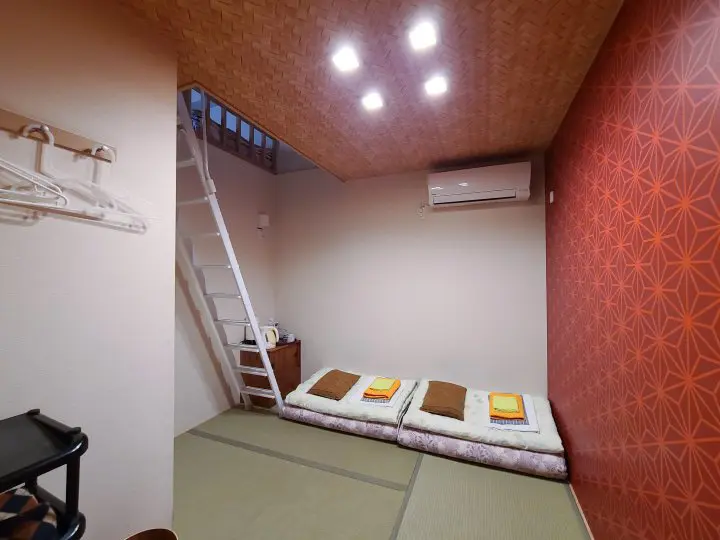
The biggest room, featuring asanoha (hemp leaf) wallpaper
As Furuichi-san opens the sliding door of the first room, I immediately notice something unique: this room is a loft. Next to the neatly folded futons on the first floor is a ladder leading up to the loft, which is prepared with two more futons.
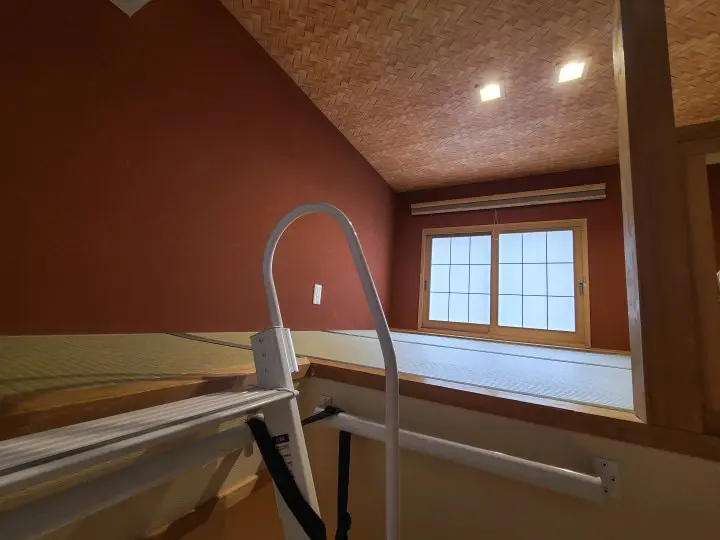
A peek into the loft
This room is the biggest one, accommodating three to four people...of course, if you’re like me and love spaces that feel like a secret hide-out, you might want the room all to yourself.
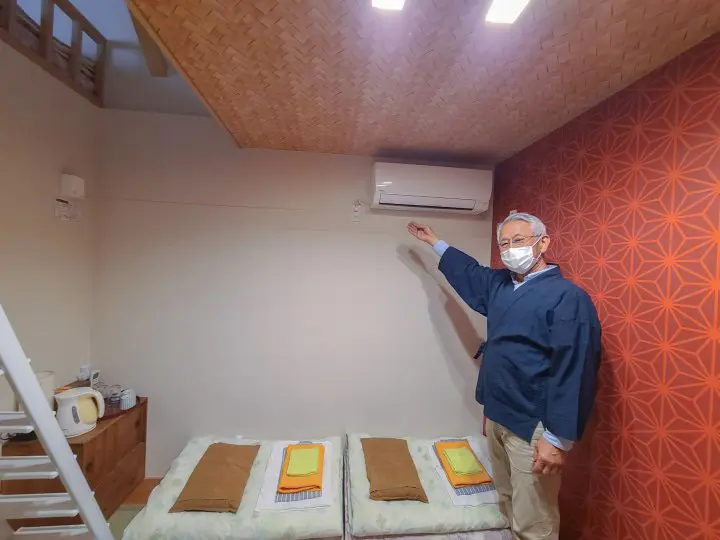
Furuichi-san motions to the indoor clothesline
Another feature of the rooms is the retractable indoor clothesline, convenient for those who want to do laundry during their stay (the ryokan laundry machine is located right outside the back entrance).
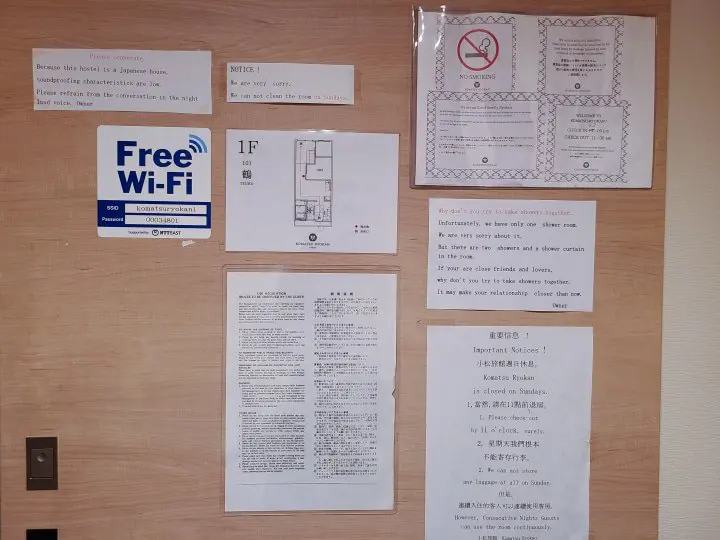
The door has several signs in English explaining things to keep in mind while staying at the inn. I can’t help but chuckle as I read one of the signs talking about the shower room—it seems the rooms also come with the owner’s sense of humor.

If you’re looking for a chance to bring your relationship with someone to the next step, a stay at Komatsu Ryokan just might do the trick. While there is only one shower/bath room, there are two shower heads, and the curtain between them is optional.
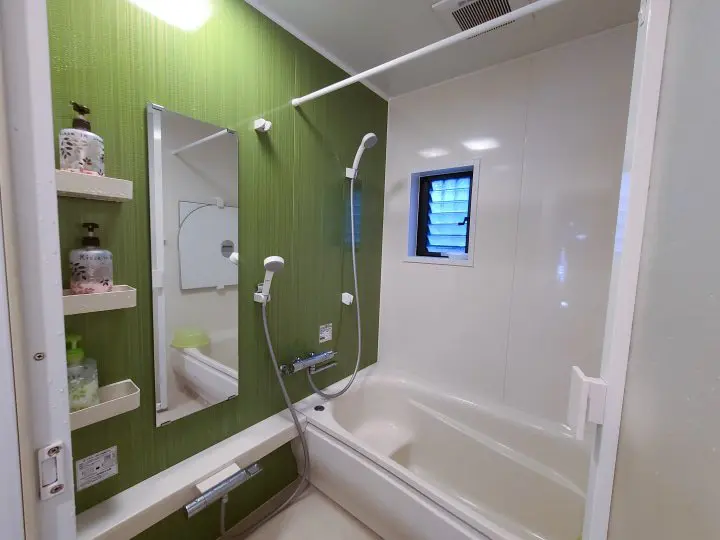
The green wall is a nice touch!
Shutters installed on each window provide the guest with the option of keeping out the morning light, and while getting to the second floor requires a trip up the stairs, the handrail is shaped in an easy-to-grab wave for extra support.
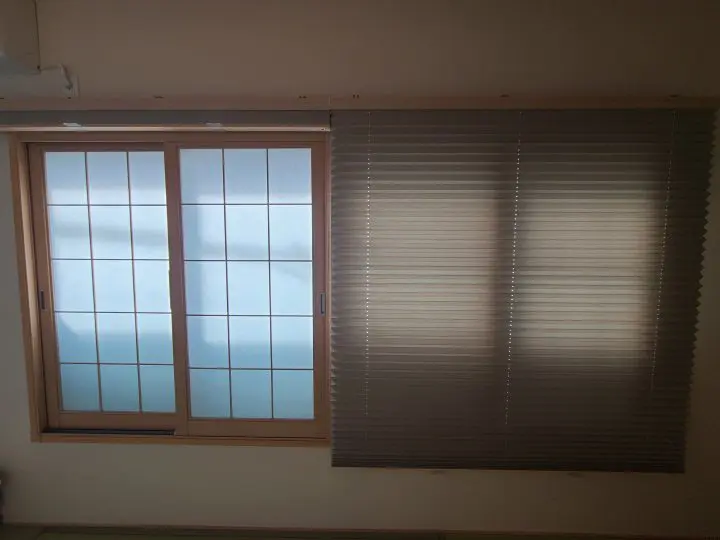
Shutters to keep the sunlight out in the morning
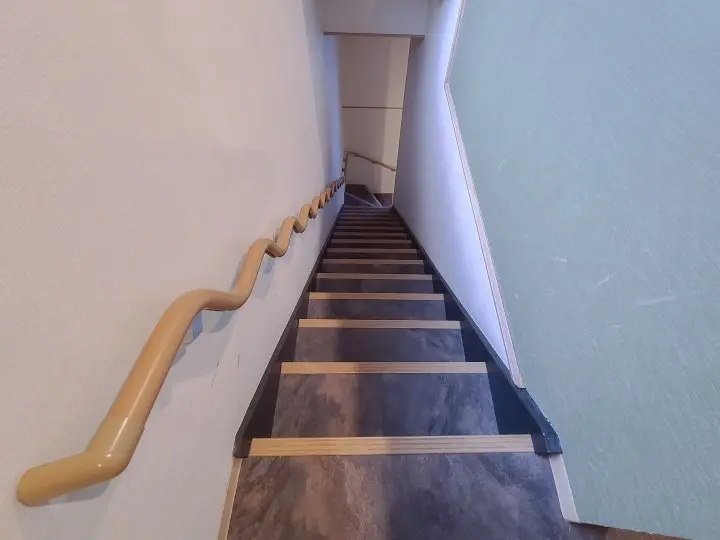
The wavy handrail adds extra support
As is common with most ryokan, there is somewhat of a curfew—Yamane-san stays up until 12am, after which the door is locked. However, if you’re someone who likes to stay out late, rest assured—guests are provided with a key code that will unlock the front and back doors at any time of the night, so you are free to come and go as you please. Of course, security is also taken seriously, and there’s a camera installed outside the back entrance to make sure only guests come in and out.
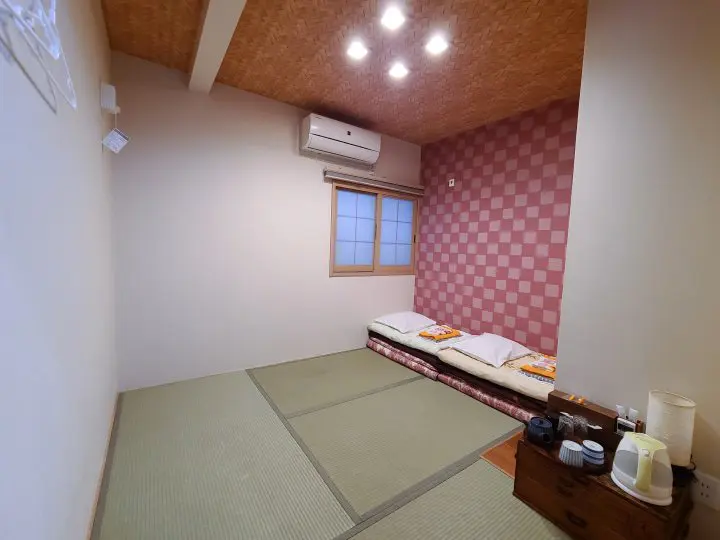
The room with ichimatsu (checkered) wallpaper
While the accommodations are minimal, Komatsu Ryokan has an excellent reputation for its cleanliness, affordable price, and warm welcome provided by manager Yamane-san. Even with over 600 reviews, the inn has an amazingly high Agoda score of 8.9/10.
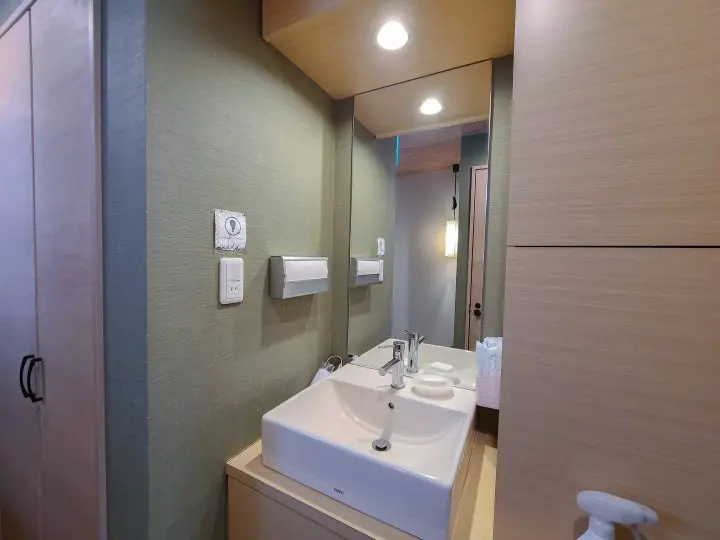
The sink area on the second floor
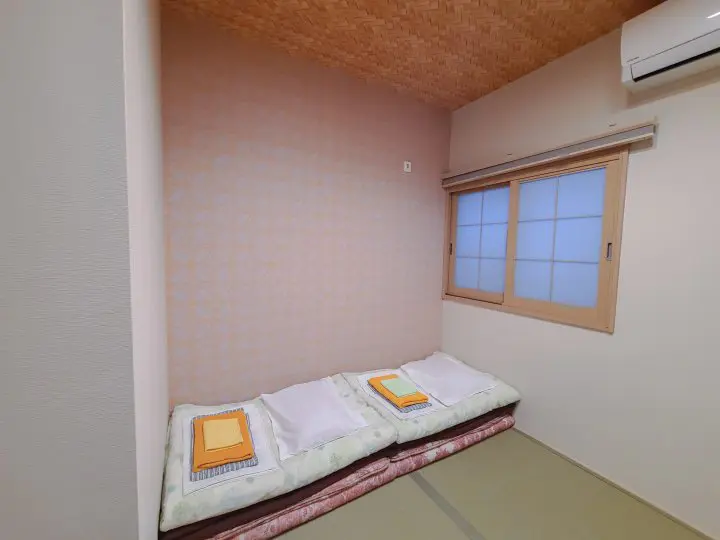
A room with shippō-patterned wallpaper
Furuichi-san believes that the inn’s cleanliness combined with its maximum effort on this soft (non-physical), human side completely outweighs any physical amenities that a ryokan could provide. He believes that this is the secret to Komatsu Ryokan’s rave reviews, and credits Yamane-san for its success.
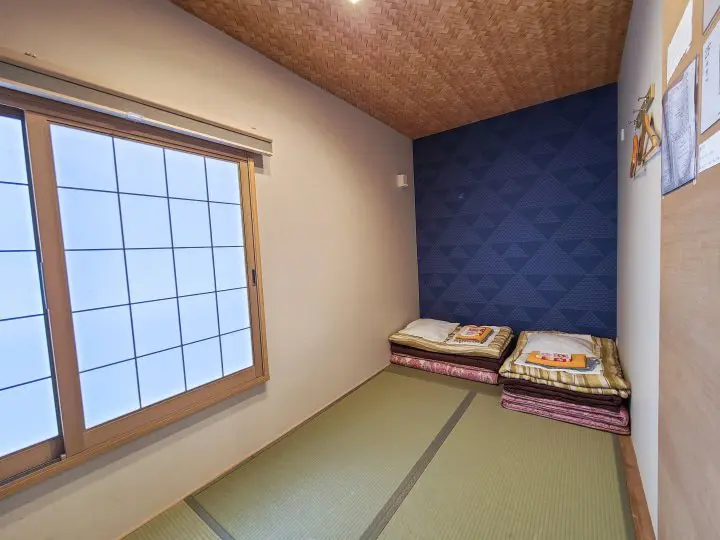
This room’s wallpaper features the fish-scale motif, uroko
I’m sure by now you’re wondering, what is Yamane-san like? Perhaps you were hoping for a photo. If so, I’m sorry to disappoint because I don’t have one to show you. Yamane-san prefers to keep an air of mystery, and the magic of Komatsu Ryokan is reserved for those who stay there. So, grab a friend (or lover) and stay the night. Spend your time enjoying the loft space up the ladder or relaxing in the double shower on the first floor. Whichever choice you make, the outcome is sure to be a positive one.
With the end of my time at Komatsu Ryokan comes the end of Tokyo Ryokan Stories. Thank you for joining me on this journey. I hope you enjoyed reading about my visits to various lodgings throughout Tokyo, and maybe even learned a thing or two—I know I did. Perhaps you’ve even jotted down a few places you’d like to stay at during your next visit to Japan, whenever it may be. Although the future is uncertain, one thing is for sure: the inns and hotels that were a part of Tokyo Ryokan Stories will be waiting, ready to welcome you with open arms.
Hotels near Komatsu Ryokan
I am an actress and model living in Japan. Tokyo Ryokan Stories is my essay series about less-known but amazing ryokan and hotels in Tokyo.



